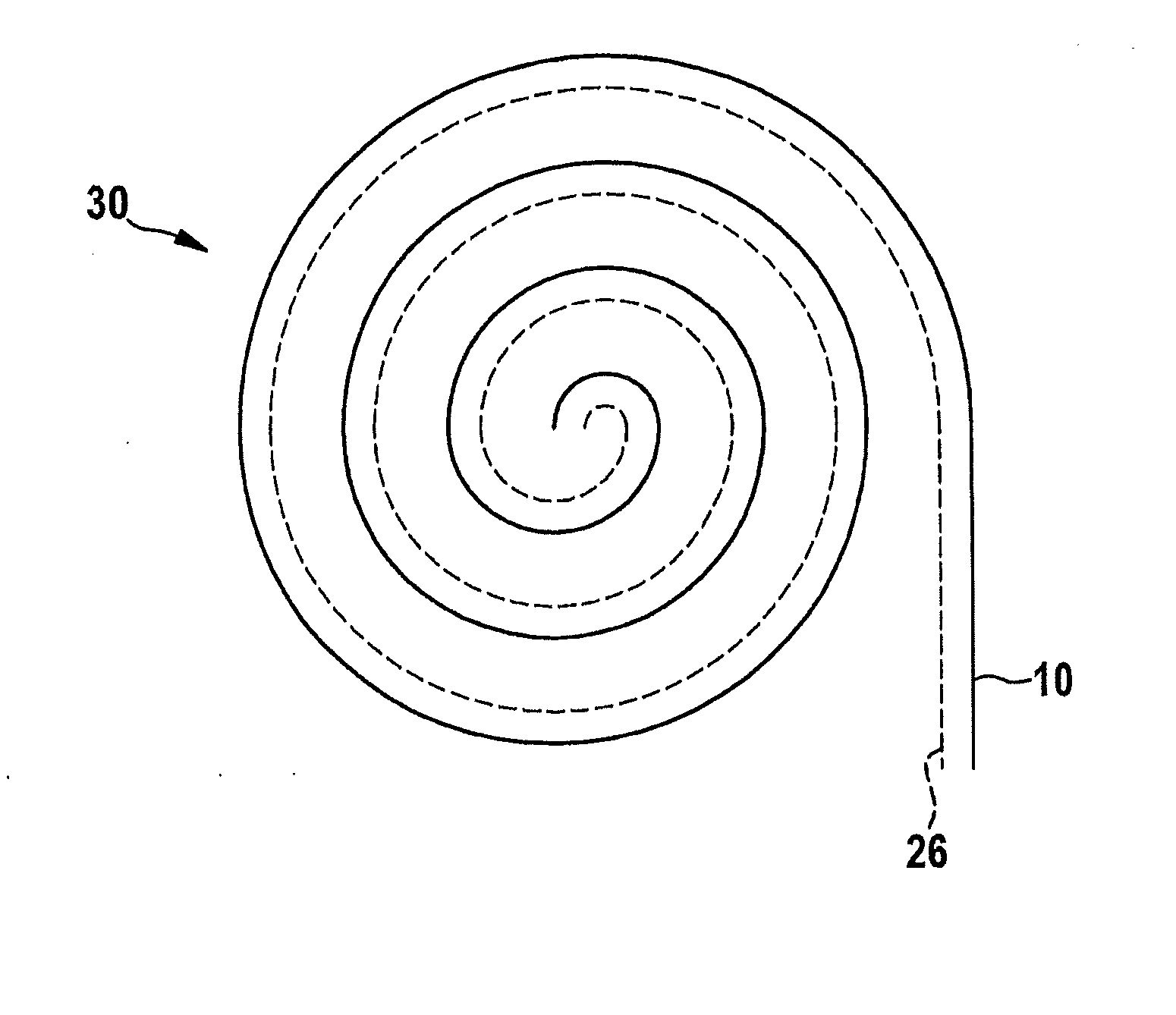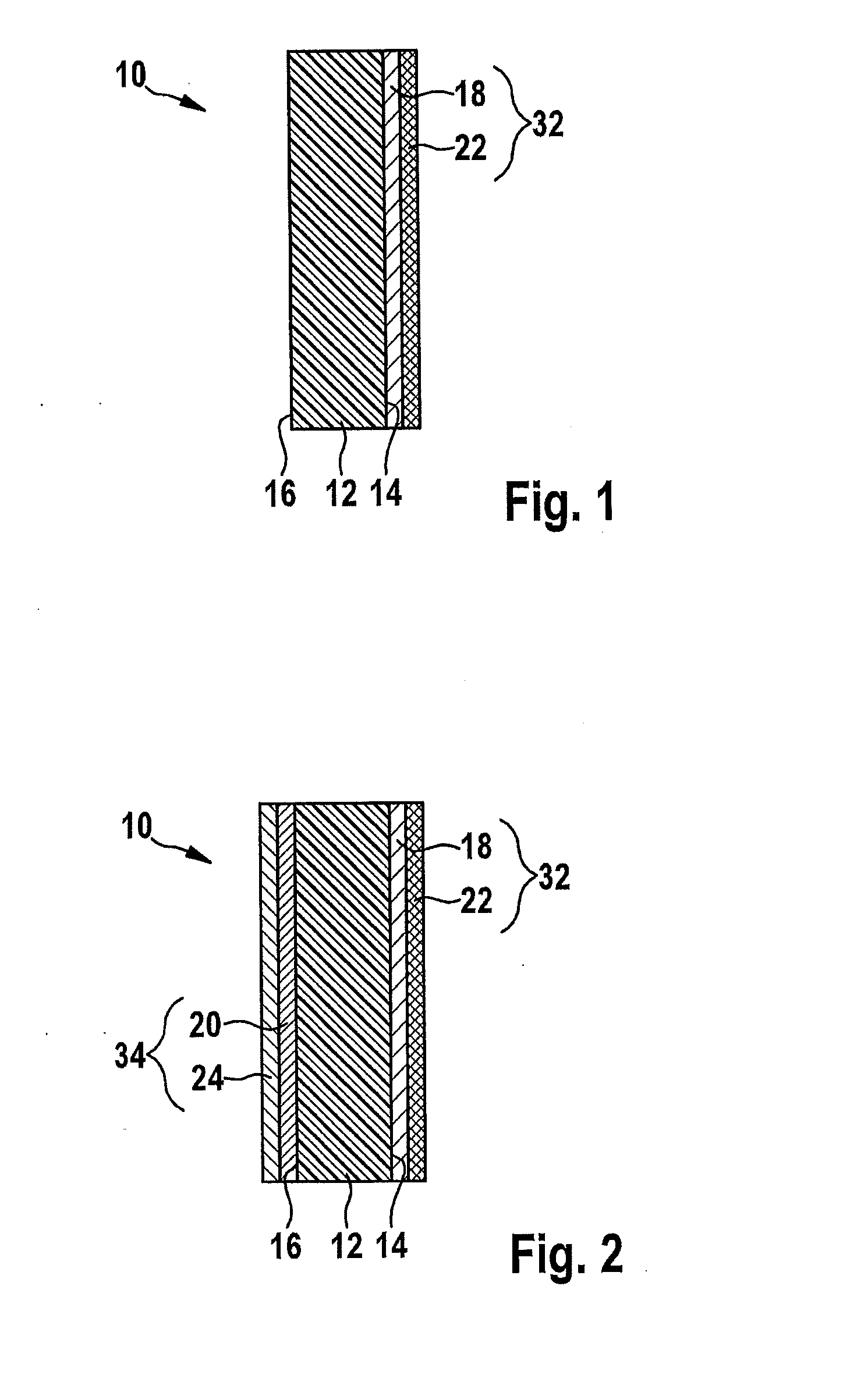Conductor for an electrochemical energy store
a technology of electrochemical energy and conductor, which is applied in the direction of cell components, sustainable manufacturing/processing, and final product manufacturing, etc., can solve the problems of reducing reducing the weight of the conductor and material cost, and unnecessary new equipment purchase, so as to improve the ecobalance of the product, reduce the weight of the conductor and material cost, and facilitate the manufacture of the conductor
- Summary
- Abstract
- Description
- Claims
- Application Information
AI Technical Summary
Benefits of technology
Problems solved by technology
Method used
Image
Examples
Embodiment Construction
[0030]FIG. 1 shows a conductor 10 for an electrochemical energy store30. The conductor includes a base body 12 and at least one electrically conductive layer 18 situated at least partially on base body 12. In this exemplary embodiment base body 12 includes a polymer. The polymer in this example has a density of less than or equal to 2.7 g / cm3. Electrically conductive layer 18 situated at least partially on base body 12 includes a metal; in this exemplary embodiment it is copper.
[0031]Although not shown in FIG. 1, base body 12 of conductor 10 has a foil-like design, base body 12 having a plane extension. The foil-like configuration of base body 12 and the resultant plane extension are shown in FIG. 4.
[0032]In FIG. 1, base body 10 includes a first side 14 on its plane extension and a second side 16 situated opposite first side 14.
[0033]As is apparent in FIG. 1, a first conductive layer 18 is situated on first side 14 of base body 12. First electrically conductive layer 18 includes at ...
PUM
| Property | Measurement | Unit |
|---|---|---|
| density | aaaaa | aaaaa |
| density | aaaaa | aaaaa |
| density | aaaaa | aaaaa |
Abstract
Description
Claims
Application Information
 Login to View More
Login to View More - R&D
- Intellectual Property
- Life Sciences
- Materials
- Tech Scout
- Unparalleled Data Quality
- Higher Quality Content
- 60% Fewer Hallucinations
Browse by: Latest US Patents, China's latest patents, Technical Efficacy Thesaurus, Application Domain, Technology Topic, Popular Technical Reports.
© 2025 PatSnap. All rights reserved.Legal|Privacy policy|Modern Slavery Act Transparency Statement|Sitemap|About US| Contact US: help@patsnap.com



